TCL QM8/QM850G Reviewed at $1,299.00 (65")
Product Name: TCL QM8/QM850G
Product Description: 2023 4K mini LED QLED TV
-
Design - 9.2/10
9.2/10
-
Video Quality - 9.2/10
9.2/10
-
Ports & Connectivity - 9/10
9/10
-
OS, Apps and Features - 9.3/10
9.3/10
-
Price / Quality - 9.5/10
9.5/10
Summary
Reviewed at $1,299.00 (65″)
Pros
- Amazing SDR & HDR brightness
- Almost no blooming
- A lot of gaming and smart TV features
- Excellent price
Cons
- Mediocre viewing angles
- Inaccurate brightness levels
- Average out-of-the-box performance
- Uninspiring audio
Cheapest Places to Buy :
*We are a reader-supported website. When you buy through links on our site, we may earn a small affiliate commission at no extra cost to you. Home Media Entertainment does not accept money for reviews.*
The TV market is dominated by the three main players, that is Samsung, LG and Sony. But these are not the only players in the market and there are many other noteworthy brands to look for. Although their brand prowess and marketing capacity is no match for the big three, the likes of Panasonic, Philips, Hisense, TCL and Vizio are still noteworthy brands to consider. As such, in our TCL QM8/QM850G review we will be testing TCL’s flagship mini LED TV for 2023.
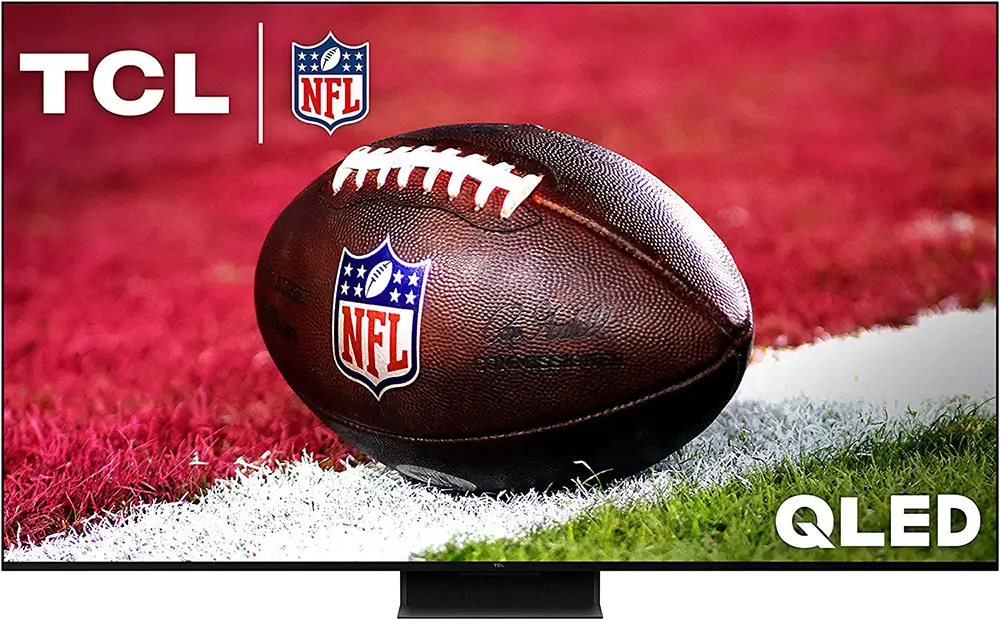
Now here we need to point out something that we see a lot of people asking. TCL is not releasing exactly the same models in the US market and Europe. That is why these have different model naming. Europe’s flagship for example, the C845 is not equal to the QM8 and the European market will probably have to wait for the C945 later this year to get an equal model.
So with this out of the way let’s go over the specs of the QM8 real quick. This TV utilizes a mini LED backlight system that uses smaller LEDs than conventional FALD systems. It comes equipped with TCL’s AIPQ Engine with Deep Learning AI, a 120Hz VA panel and packs all the bells and whistles you should expect from a high profile TV as this. Some of its features include Dolby Vision IQ, HDR10+, HDMI 2.1, FreeSync Premium Pro, Dolby Atmos, DTS:X pass-through, IMAX Enhanced and the latest Google TV.
The TCL QM8 looks like a very impressive TV. Does it perform as good as it seems? Let’s start our analysis and testing to find out.
Design
This is our first taste of a TCL TV so we had no previous experience with them. And so we cannot really compare it with any of their previous models, only judge it compared to the competition.
Honestly, the QM8 is not a TV that tries to impress. For a flagship TV, it is much more modest in design than some other brands. But obviously this is not something that most will be looking at from a TV of this caliber.
Measurements
We measured the thickness of the main body at around 1.9″ (4.8 cm) which makes the QM8 considerably thicker than some other mini LED TVs we tried recently, like the Samsung QN90C.
As for its black borders, these are very thin and have similar thickness to some other flagships we have seen.
Back Side
The back side is obviously plastic and comes with a fine textured surface.
All connectors are on the left side, looking sideways, with only the power connector being on the right. The insets housing the ports have special plastic covers in order to cover the cables and allow for a cleaner look.
Lastly, visible at the center is the subwoofer utilized by the TV’s audio system.
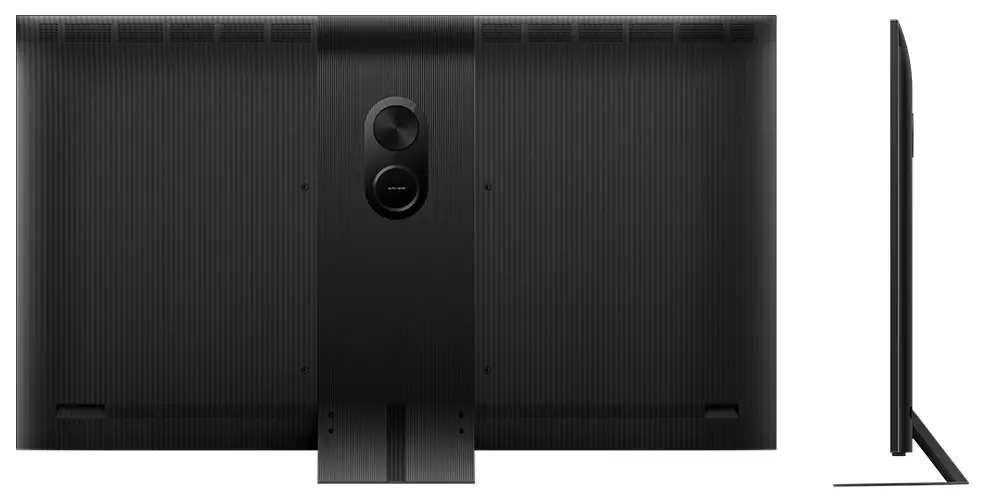
Stand
As for the stand, the TV uses a small central stand design. It does look very similar to other previous stands we have seen so nothing out of the ordinary. We do like that the stand is made out of metal making it more sturdy, especially for the bigger TV sizes.
We also like the fact that you can attach it to the panel in two different positions. In the lower position there is a gap of around 2″ from the surface. While on its raised position there is a gap of about 3.5″ which is ideal for placing a soundbar underneath.
Most soundbars do not need more than 3″ of height so the QM8 is more or less safe on this regard.
Remote
As for the remote, this is the usual smart TV remote design we find in many brands. Its button layout reminds us more of Sony’s rather than Samsung’s simpler approach.
As usual it comes with a built-in microphone to use with voice control functionality. And there are also six dedicated buttons for Netflix, Amazon Prime, Youtube, Apple TV, TCL Home and TCL channels.
One thing we definitely love in TCL’s remote is its motion sensing backlight. Sony is using the same feature in some of their remotes and we love to see TCL also implementing it in theirs.

Video Quality
Processor technology used
As with all brands TCL has its own proprietary processor that they use in their own TVs. Called TCL AiPQ Engine with Deep Learning AI, this chip is a bit of a mystery as with all processors in the TV market. Brands are very secretive of their true nature and capabilities and we are only left with what marketing material they give us.
In 2023 TCL is using their new AiPQ processor 3.0 which works with 5 breakthrough Ai-Picture-Quality optimizing algorithms. Ai-Contrast, Ai-Color, Ai-Motion, Ai-Clarity and Ai-HDR.
With these five the TV is capable of not only processing colors and motion but also be equally capable at upscaling lower resolution content to 4K.
Resolution and Up-scaling
First test of the day is upscaling and we run various content to determine how capable the TV is in this area.
We run a few videos in different resolutions ranging from ultra low quality ones, some 480p DVDs, some in 720p and obviously 1080p resolutions. We tried broadcasting signals, streaming content and discs to have a better, all around idea of the TV’s capabilities.
Surprisingly the QM8 was not as good with low resolution content as we were expecting. Compared to other flagship TVs we had seen before the TCL was certainly less capable of upscaling low resolution images to current standards. We did notice some minor loss of quality and the images did not have the clarity and detail of top tier upscaling.

Audio Processing
Although we will talk more about audio in its dedicated section we should note that the QM8 is capable of DTS Virtual:X processing. This is a virtual audio technology used to create more immersive sound.
Lighting technology used
The QM8 is using a mini LED backlight system which is precisely controlled by Quantum Matrix Technology. The major advantage of mini LEDs is that they have only 1/40 the height of conventional LEDs.
Mini LED Explained
Instead of using a lens to disperse light, and a package to fix the LED in place, mini LED is using incredibly thin micro layers filled with many more LEDs. This way TCL’s AIPQ Engine has much better and more precise control of the densely packed LEDs. This prevents what was the most obvious disadvantage of previous LCD backlight systems, blooming.
Number of Dimming Zones
As per usual different sizes utilize different number of dimming zones. The 65″ we have for testing seems to have 1,080 zones which is about half of the 2,300 zones included in the 85″.
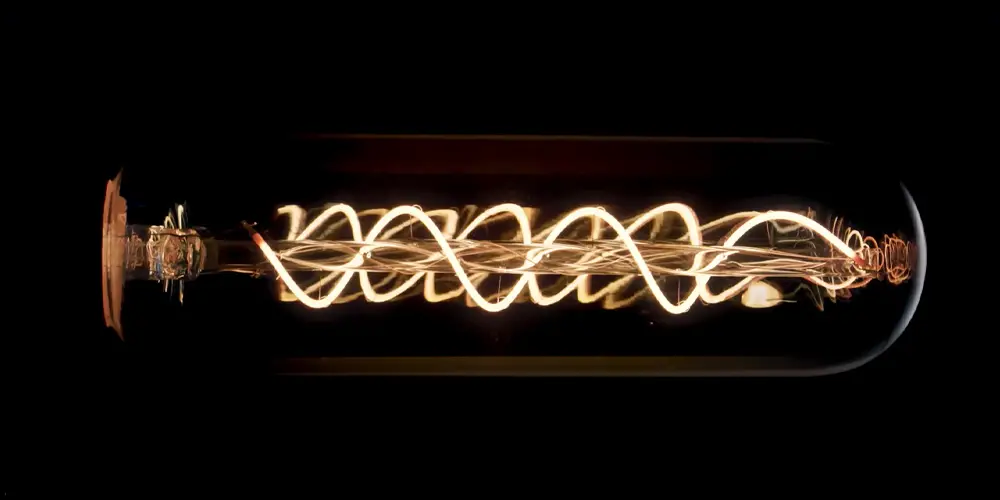
Blooming & Zones Transitioning
Looking at our tests we can say that the QM8 has a very capable local dimming system. Its high number of zones available surely minimizes the blooming effect considerably. It is still visible in specific scenes, like in completely dark scenes with bright objects. But compared to other mini LED implementations the QM8 is definitely very high on the performance ladder.
But the number of zones available is not the only strong aspect of its local dimming feature. Its zone transitioning was also very good and relatively fast. As a result you will not be able to see when a bright object will pass from one zone to the next. This surely adds a lot when it comes to overall image quality.
Brightness / Contrast
Next we will be looking at the brightness of the unit. TCL claims a 2,000 nits rating for the QM8 so let’s see how close to this can we really get.
SDR and HDR Measurements
First test is the SDR brightness over a 10% window and the number we got was 2,026 nits which is totally amazing. With so much brightness the TV will have no problem whatsoever, even in an extremely bright room.
We then switched to HDR content and in our HDR brightness over a 10% window test we measured 2,004 nits. Again excellent brightness with the TV being able to display very bright highlights no matter the room conditions.

Keep in mind that the TV can get even more bright than the numbers above. If you use the Vivid mode you can get around 10% extra brightness from the above measurements. But obviously the Vivid mode is not so accurate so we would use it only if it is absolutely necessary.
From the above it seems that TCL was right to the point with their claims. The QM8 is an amazingly bright TV and can do HDR content real justice.
Automatic Brightness Limiter (ABL)
As with most TVs nowadays the QM8 comes with an Automatic Brightness Limiter (ABL). This system lowers the overall brightness of the screen when large parts of it become very bright for a long period of time.
The ABL on the QM8 would kick in and dim the image enough to be noticeable. But the fact is that with such a high peak brightness it didn’t matter so much. The TV remained bright enough even after the ABL would settle the brightness to its lowest value.
Last Year Comparison
Unfortunately we didn’t test any of the previous TCL releases so we cannot really make a comparison here.

EOTF Tracking
Unfortunately brightness levels did not follow the EOTF reference values very much. And this was something we noticed no matter the picture mode we used.
The QM8 displayed much lower black levels while after a certain point it kept far above the reference values up to its sharp roll-of. We do not know if this was deliberate or if it is some kind of bug but we do hope that TCL will be able to fix this. Because as it is the TV is not very accurate in this respect.
Contrast Performance
The QM8 has amazing contrast. And its local dimming helps a lot in making blacks looks like real deep blacks even in a completely dark room.
The TV actually managed to measure one of the highest contrast values we have seen in a mini LED TV. Even the recently reviewed Samsung QN90C did not have so good contrast as the QM8.
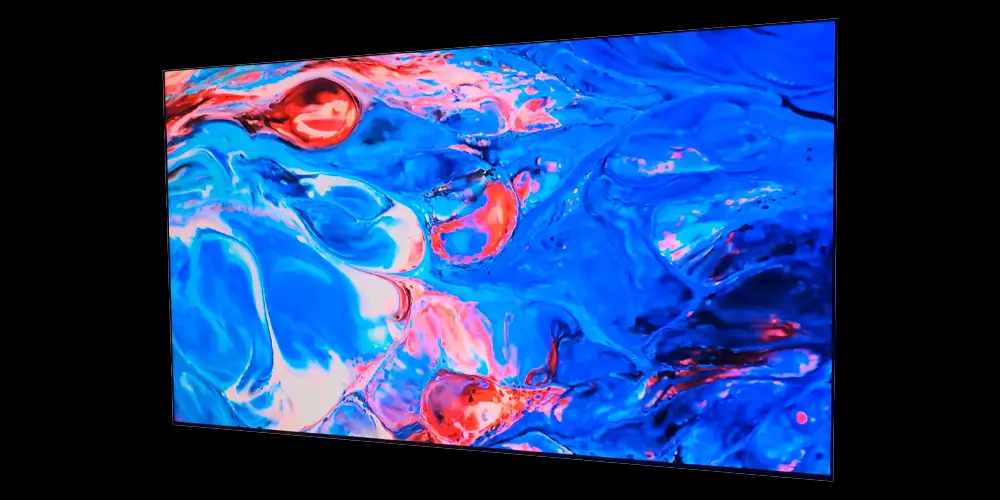
Viewing angles
The TV comes with a VA panel and these in general don’t have very good viewing angles. In essence the TV performs similar to all other TVs that come with VA panels.
And it seems that TCL haven’t used any kind of special layer that could enhance its viewing angles as we have seen in some other top tier VA panel equipped TVs.
As a result we would say that 25 degrees, with an absolute maximum of 30 degrees, is the most this TV can do. Anything more and image colors, black levels and brightness downgrade rapidly.
If you have a sweet spot from where you will be watching then this is not a big deal but if you plan to use this one in a family room then we would strongly suggest you try it out first before purchase.
HDR support
With the current HDR war you really have to choose which camp you want to follow as not many brands support all available ones. It’s either Samsung’s HDR10+ or Dolby Vision that Sony and LG support. And this is really a shame as we don’t get the chance to choose all of them at any time. Thankfully some brands, including TCL and Hisense, are not bound to any specific camp and instead went ahead and added everything in their TVs.
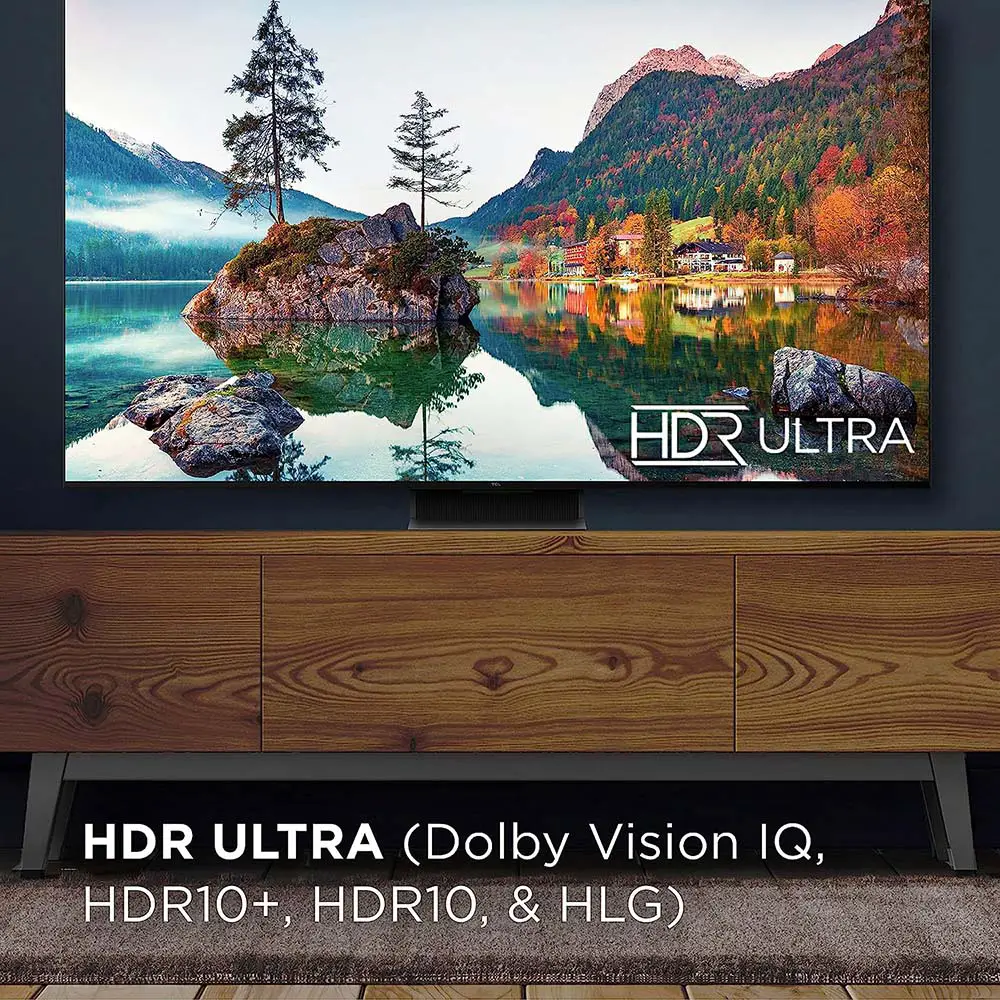
As such the QM8 supports not only the basic HDR10 but also HLG which is used for streaming content. And we also get HDR10+ and Dolby Vision which use dynamic metadata for much better and accurate images.
The QM8 also supports Dolby Vision IQ. This technology considers environment lighting by making HDR more accurate at depicting how dark or bright the lighting is within your specific room light conditions.
This is done with the use of the TV’s built-in light sensor. And thankfully this is a feature that you can turn off if you really want to appreciate the brightness capabilities of this unit. As enabling it most of the time will dim the picture far more than what we would like.
If there is one thing missing that would be HDR10+ Adaptive that was available in the Hisense U8H along with some Samsung TVs. Everything else is available.

Color coverage
The QM8, being in essence a QLED, uses a special Quantum Dot layer. With this the TV is able to display more vivid and lifelike colors. We have seen promotional material claiming 100% coverage of the DCI-P3 color space when this layer is used but reality could not be more far from the truth.
And you should never take these numbers literally as they are mostly used for marketing purposes. Real numbers usually deviate a lot from these claims.
In our case we measured the TV to have about 96% coverage of the DCI-P3 color space which is amazing and very close to perfect. On the wider REC.2020 color space we got a coverage of 78% which again is very good.

DeltaE Errors
Before calibration the TV had average color accuracy. Some colors were above the DeltaE limit of three. White balance was way off, especially towards its brighter shades while color temperature was much warmer than the target value. Gamma was slightly better but still had its issues.
After calibration we managed to fix most of the above irregularities. Colors were all accurate and color temperature was on point. Gamma and white balance were still not perfect but this was a minor issue and not such a big deal.
We cannot say that the QM8 was bad pre-calibration. You can still use the default settings and get a pretty accurate image. But the TV shines only after you really go through the trouble of calibrating it. Therefore we cannot say it is exactly casual user friendly.
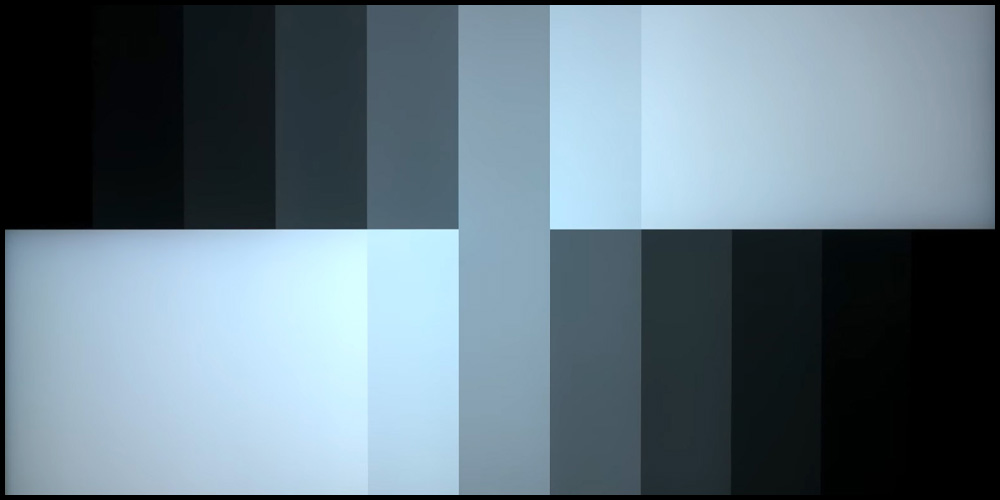
Color Gradients
Color gradients were very good but there was some minor banding in some darker shades with grey being the most obvious one. But overall the QM8 did great in this test.
There is also a Noise Reduction function in case you want to eradicate banding completely. But if you enable it some detail is lost and in general we didn’t like this feature much.
Panel Uniformity
Panel uniformity was very good in the QM8. Gray uniformity tests revealed some dirty screen effect problems. On the other hand, the black uniformity test was almost perfect.
The TV behaved incredibly good either we had the local dimming feature on or off. Obviously each setting revealed some very minor problems but nothing major to talk about.

Motion performance
Next test was for the TV’s motion performance. The QM8 comes with a 120Hz panel which is pretty standard for a flagship TV. What is interesting is that the QM8 not only supports 120Hz but also 240Hz.
But there is a catch to this. In order for the QM8 to reach such a high refresh rate it has to lower the image resolution to 1080p. But even with this minor nuisance it is impressive to see a TV doing 240Hz. Actually this is impressive considering TVs just now start to support 144Hz.
The QM8 has some very visible stutter when it comes to low framerate content. And this was to be expected as this is a characteristic of all TVs with low response times. On the other hand with 60 fps content we didn’t notice any stutter.
Motion Interpolation
The TV comes with the standard Motion Interpolation in order to smooth out motion. This feature works up to 120Hz and the results we got were very much dependent on the content.
With slow paced scenes and camera movements the TV could process images much better. But with fast camera pans and objects moving at high speed, motion interpolation could not keep up. As a result we did see a lot of artifacts appearing on screen.
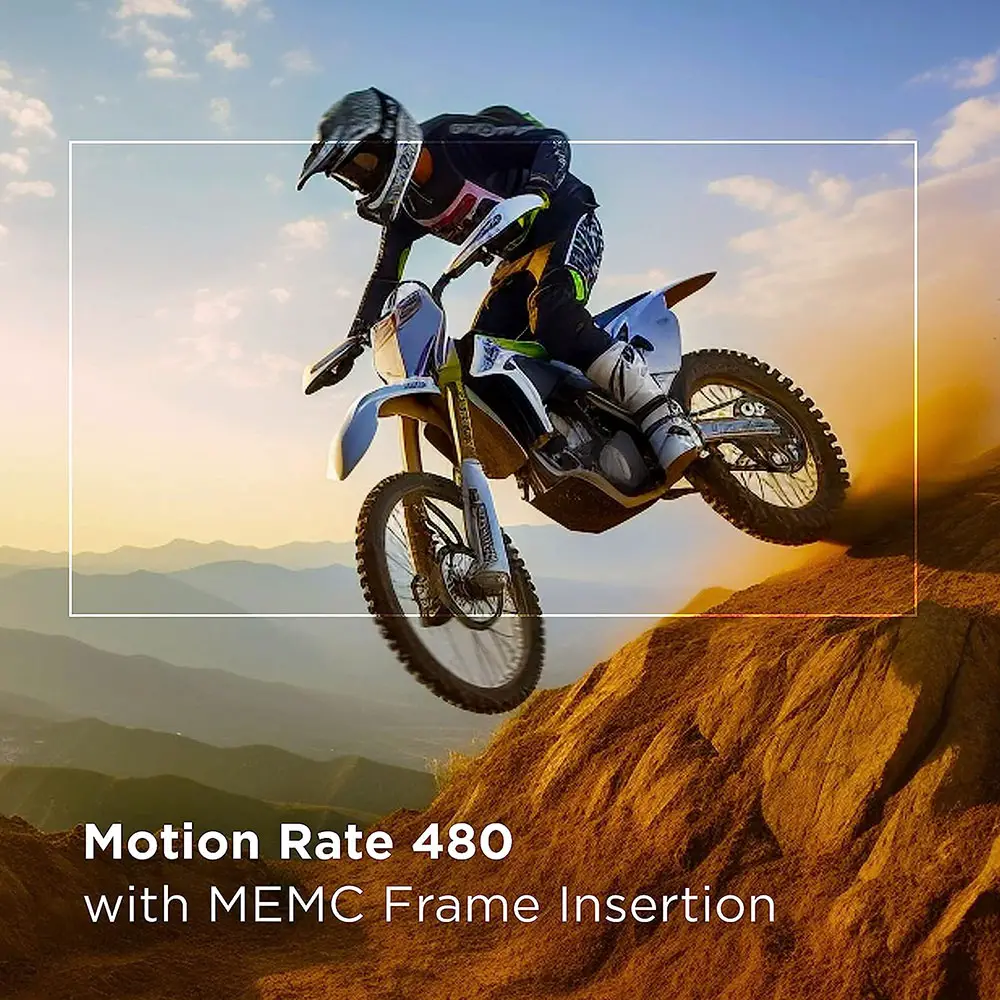
Black Frame Insertion (BFI)
Black Frame Insertion (BFI) is also available as usual. BFI is an alternative motion interpolation technique that inserts a black frame in between two individual frames in order to smooth out motion.
Although the end result is very good, it has a couple of side effects. First due to the black frames, brightness takes a visible hit. Also, due to the lower frequency used, which can be either 120Hz or even 60Hz, some flickering may become noticeable.
Overall Motion Impressions
We can say that after going through all our test content we are pretty satisfied with the TV’s motion. It obviously has its ups and downs but it did behave similar to many other flagships we have tried lately.

Input lag Measurements
Let’s take a look at the TV’s input lag performance next.
According to our measurements the TV displayed an average of 15.3ms input lag in both 1080p and 4K resolutions at 60Hz. For 120Hz we got an average of 7.5ms. Surprisingly for 144Hz and 240Hz we got slightly higher values at 16ms. This is still very good but was surely a bit strange to have higher input lag than in 120Hz.
Outside of Game mode we got an average of 126.0ms which is obviously high but still usable for casual and offline gaming where response times are not so crucial.
Other Gaming Features
We should also not forget to mention that the TV supports Auto Low Latency Mode (ALLM). And both the PS5 and Xbox consoles support this feature, so the TV will switch to Game mode automatically.
HGiG Mode is not missing either. This is HDR Gaming Interest Group’s technology that ensures you enjoy HDR games the way that their creators and developers intended.
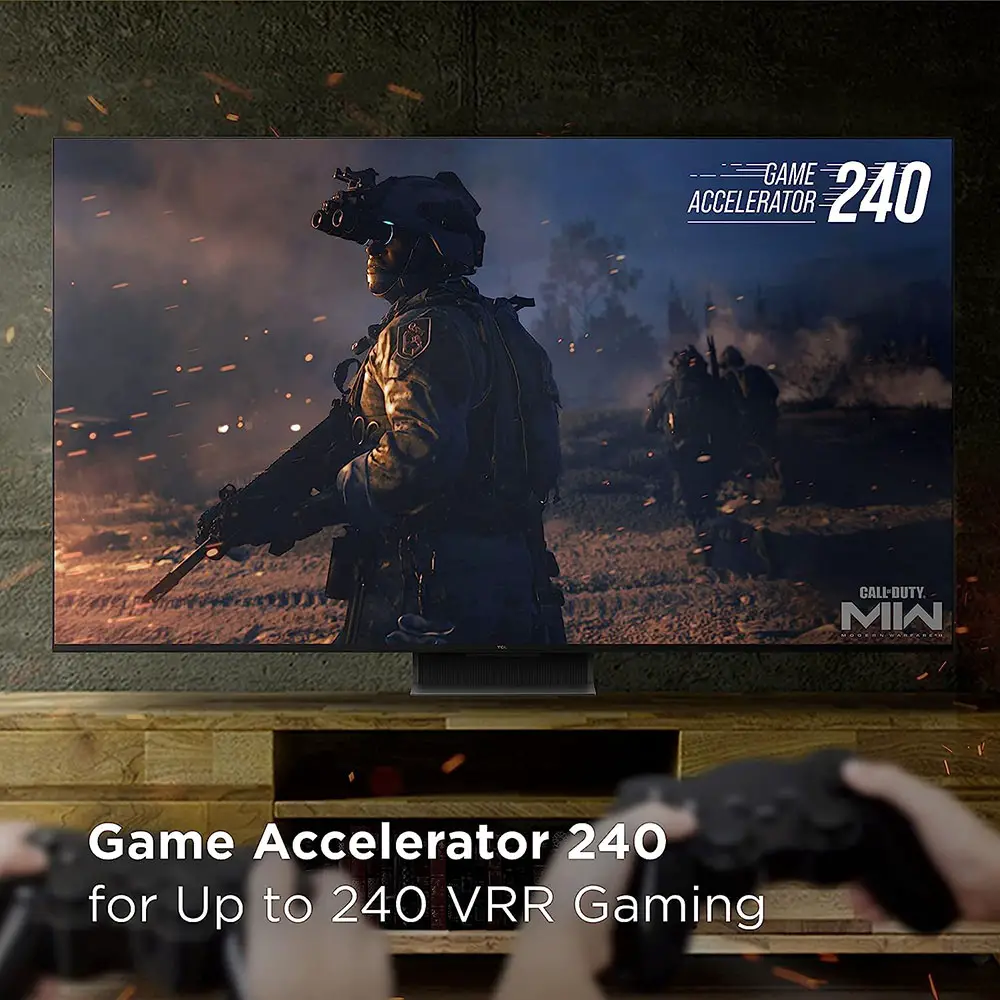
VRR Support
The QM8 makes sure to include all VRR support there is. As such we find HDMI Forum VRR, AMD FreeSync and NVIDIA G-Sync.
Keep in mind that for 1440p and 4K resolutions VRR is enabled up to 144Hz. For 1080p resolution, on the other hand, it can go up to 240Hz.
Another thing you should be aware of is that the QM8 currently has trouble when you try refresh rates above 120Hz with a NVIDIA graphics card. Let’s hope TCL will be able to fix that problem relatively soon with a firmware update.
Trying Out a Few Games
As we do lately, we tried a couple of games with PS5 and Xbox series X for getting a sense of how the TV can do with gaming. The first one was F1 2022 while the second was Dead Space. And while Dead Space is only 60Hz on consoles, F1 2022 can do up to 120Hz.
Obviously we tested both games with Game mode enabled. And the TV was great at rendering every one of our commands on screen without any delays. Response times were extremely fast and everything looked great to be honest.
The QM8 is an amazing gaming TV. And if TCL manages to fix some minor problems we encountered then surely this one is one of the best gaming TVs this year.
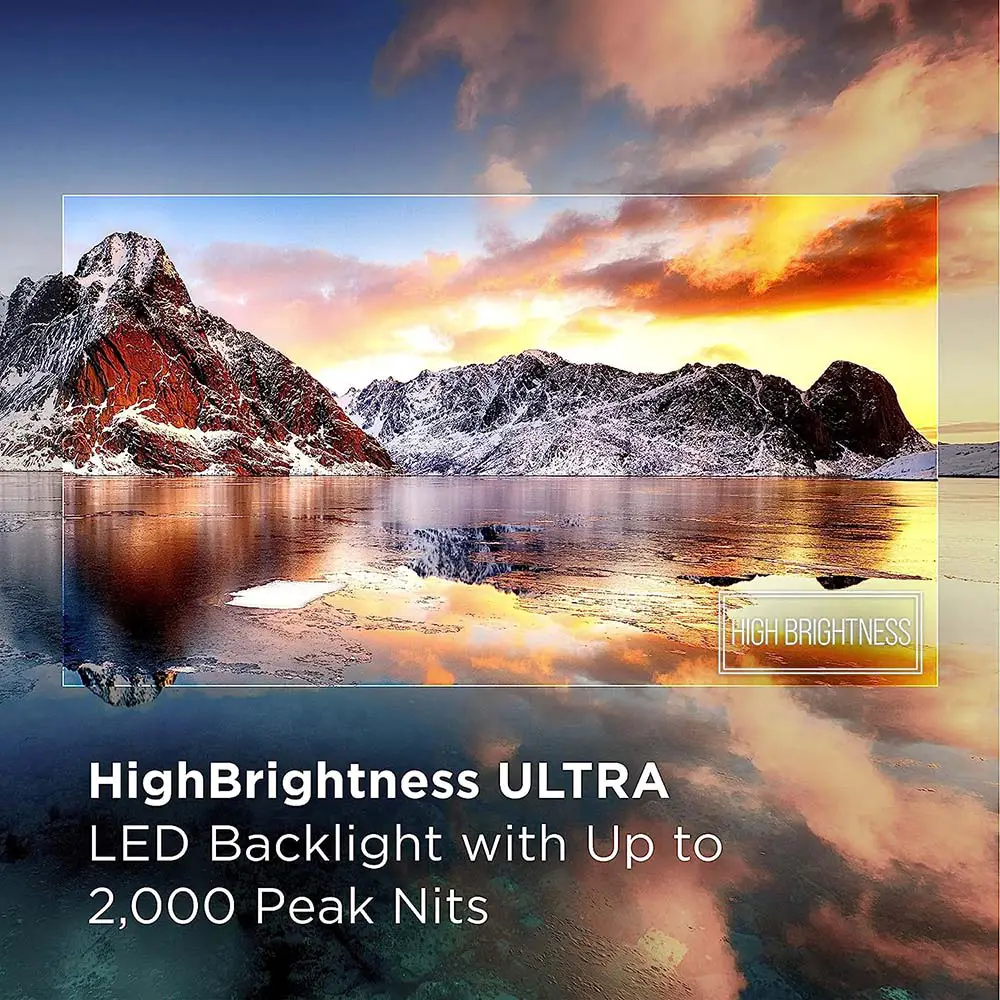
Overall Image Quality Impressions
Mostly positive results here. The QM8 scored very high in our brightness tests managing to break the 2,000 nits threshold. Color reproduction was also very good while contrast was excellent. Motion performance was really solid while input lag was almost perfect. The TV’s panel also showed very good uniformity in both grey and black colors.
But not everything was perfect. EOTF tracking was way off, viewing angles suffer a lot while out-of-the-box performance was average.
Audio Quality
TCL is not advertising the QM8’s audio system as much as other brands do with their flagships. And this is for the better as no matter what technologies you add sound will never be on par to their image quality.
Audio System – Channels & Power Rating
TCL seems to have used a 2.1 channels audio system in the QM8 with a 10W + 10W configuration for the two main channels. And an additional 20W for the subwoofer. This brings the total power output to 40 watts.
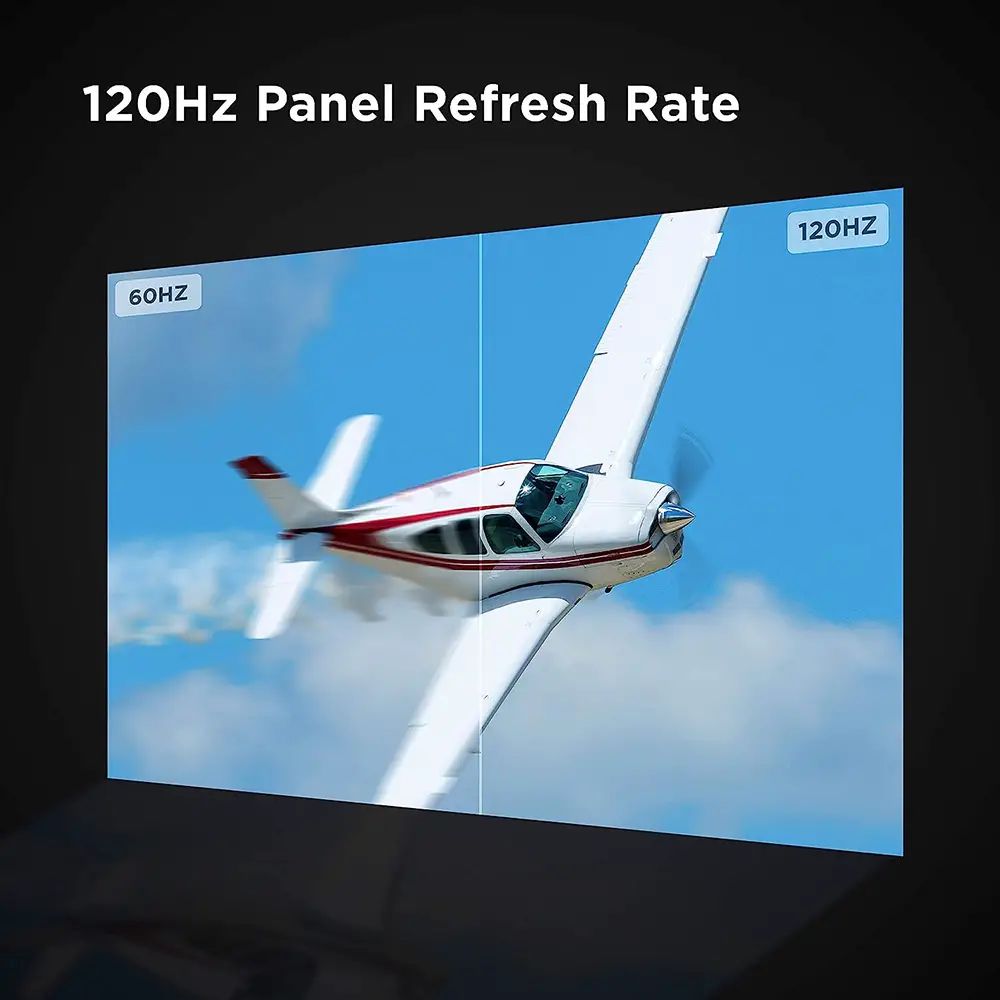
Audio Formats Support
The TV can decode Dolby Atmos and Dolby Digital+ but this is mostly for promotional purposes as the TV cannot create a real surround experience. If you want to get the most out of it then you will certainly need a dedicated audio system or at least a soundbar with surround speakers. Unfortunately there is no native DTS decoding.
Thankfully Dolby Atmos and DTS:X can pass-through from eARC to some Dolby Atmos/DTS:X capable soundbar or dedicated sound system in this case.
Keep in mind that through ARC and optical the TV can pass-through only Dolby Digital 5.1 and DTS.
Audio Features
The QM8 does comes with virtual tech for the sound in the form of DTS Virtual: X. This aims at giving sound a more three dimensional feel for higher immersion. We tried this and we cannot say we were thrilled with the results.
We did sense slight differences in the sound output as audio felt more enveloping and with more depth. But in no way it can emulate a full surround system and it depends a lot on the content. In some cases DTS Virtual: X was nice but with a lot of content we tried the sound felt very much altered and over-processed.
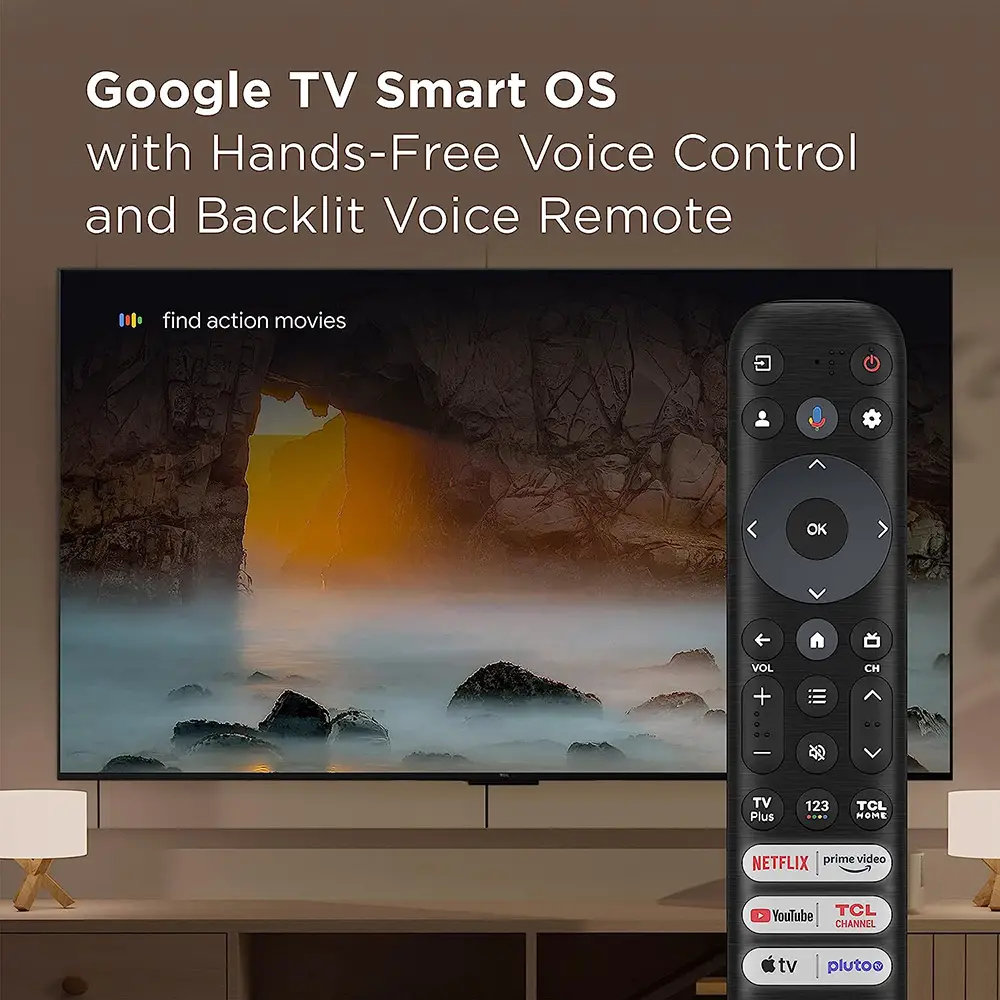
Overall Audio Performance Impressions
If you really want sound that can match the QM8’s image quality then make yourself a favor and buy a full surround system. Or at least a good Dolby Atmos soundbar.
Because no matter what brands will do, sound will always feel like an afterthought even with top tier TV models. For casual use the sound was perfectly fine. High volume and clear dialog were its characteristics but for cinematic immersion the audio system of the QM8 fails completely.
Ports and Connectivity
All ports of the QM8 we find on the left side looking sideways. As always the power connector is the only port that we find on the right side.
Looking at all the ports from top to bottom we get the following. An Ethernet port for wired connection to your local network, four HDMI ports, a cable/antenna port, a single USB, a special jack for composite video with stereo audio input, a headphones input and a digital optical audio output.
HDMI Specifications
The TV comes with two HDMI 2.1 ports and two more HDMI 2.0 ones. It is interesting to see that from the two HDMI 2.1 ports one supports up to 144Hz while the other goes up to 120Hz.
The good thing with the QM8 is that unlike some other TVs that comes with only two HDMI 2.1 ports, the eARC on the QM8 is actually on one of the HDMI 2.0 ones. This way you won’t have to sacrifice one of the HDMI 2.1 ports from passing the audio to an external audio system.
Obviously the HDMI 2.1 ports support all the latest features. These include ALLM, VRR, G-Sync, FreeSync, eARC and HFR.
Connectivity Observations
Again, the Ethernet port is still the usual 100Mbps one. But this does not surprise us, as we have yet to see a TV making the transition to Gbit adapters.
Streaming requirements and internet connections have greatly advanced the last few years. This made the 100Mbps limit obsolete a while back. And while most TVs update their WiFi capabilities (some models even support WiFi6 this year, like the QM8) the Ethernet adapters are still the same.
Another disappointing fact is that the antenna/cable connector is only ATSC 1.0 which means that the TV cannot display broadcasting channels that go beyond the 1080p resolution. TVs with ATSC 3.0 only can display 4K resolution broadcasting channels.
And lastly the USB port is the older 2.0. Many flagships still come with this archaic version so it is no surprise to us.
Wireless Capabilities
When it comes to its wireless capabilities the QM8 supports WiFi6 (802.11ax) along with Bluetooth.
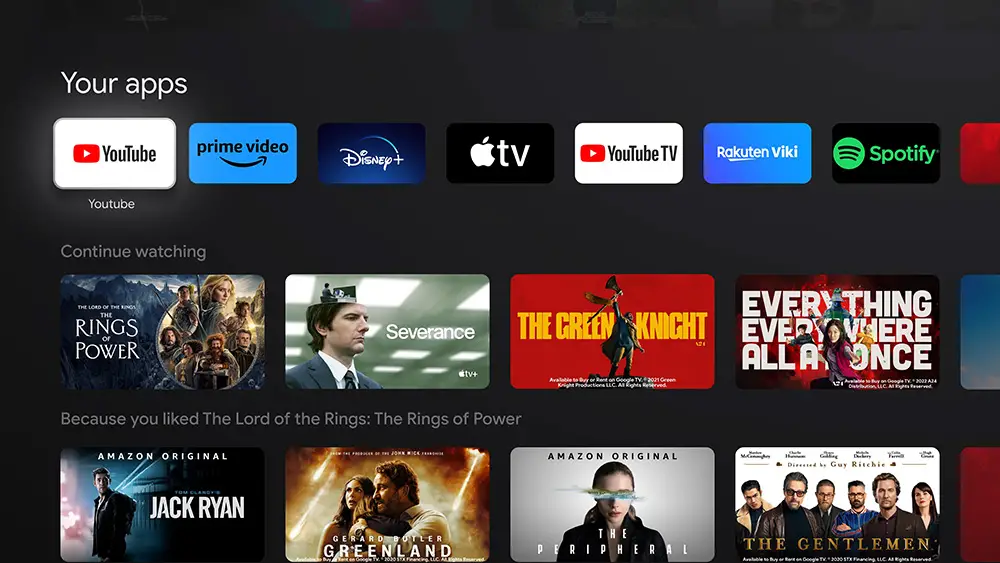
OS, Apps and Features
The QM8 comes with the latest version of Google TV which has reached version 11.0 this year. The last versions of Google TV do not have major differences between them and they keep their overall layout unchanged.
Google TV 11.0
Google has done a poor job at making clear of the differences between Google TV and Android TV that is still being used from some TV brands.
To make things real simple Google TV is still Android TV but with an extra layer on top of it. Think of it like how it works with Android smartphones. Most manufacturers that use Android in their releases they use on top of that their own layer that gives this extra something to their UI that make them unique both in appearance and functionality.
The same is with Google TV. You still basically use Android TV but there is the extra Google TV layer on top in order to make the UI feel different both in looks and functionality.
Google TV seems to have been designed around recommendations, either it be movies, TV shows or applications and this seems to be the main focus of all the latest OS in general. During setup the wizard asks you of what specific streaming services you use in order to customize the Home screen recommendations.
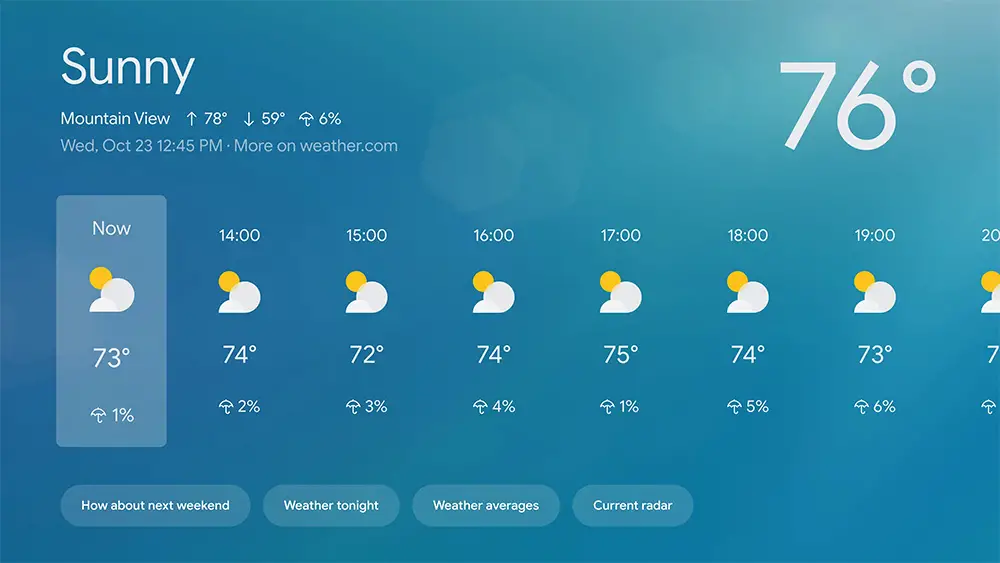
Keep in mind that Google TV is still Android at its core even though it looks different from Android TV. But with Google TV things seem more fluent, more direct and more easy to navigate around.
Google TV 11.0 in the QM8 was really smooth navigating around. All apps would open almost instantly and we didn’t notice any bothering delays between apps. Overall a very pleasing user experience. One that such a flagship should always offer.
Streaming Capabilities
If there is one thing that Android has in abundance that is huge app support. Through the included Google Play Store you can find literally thousands of apps that you can download and use except from the pre-installed ones. There is so much content available that you will hardly miss anything.
All the big names are obviously present like Google TV, Disney+, Netflix, Amazon Video, Hulu and Youtube as well as Pandora, Tidal, Google Play Music, Spotify or iHeartRadio. As always some of them are region dependent so make sure the ones you are interested in are working in your area. Lastly many apps like Netflix and Youtube support playback for both 4K and HDR content for those interested in it.
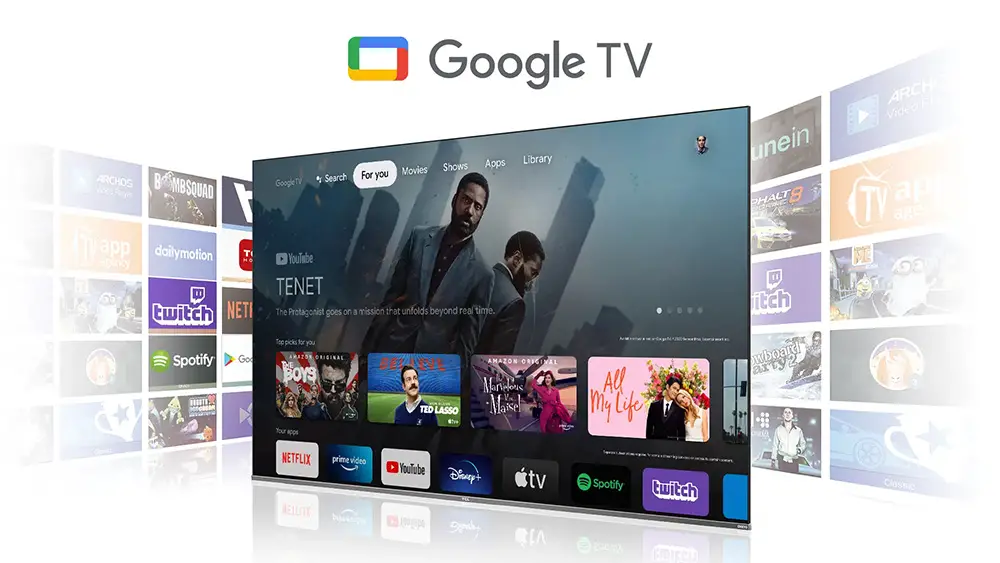
Various Connectivity Features
The TV comes with support for both Chromecast and Airplay 2. This means that no matter what mobile device you have you can stream content from it to the TV itself.
Voice Control
And since we are talking about a smart TV platform we cannot do without voice control functionality. The QM8 works not only with Amazon Alexa and Google Assistant but also supports Apple Homekit.
Unfortunately for all of them you will need an external device as none is built-in the unit itself.
Built-in Media Player
As with most TVs nowadays the QM8 can playback a wide range of files and codecs through its USB port. These built-in media players have come a long way since their early days and now can playback almost all the common codecs available.
We tested the TV by trying a selection of files we keep for this reason. The files we tried were various combination of video and audio codecs and from what we saw the QM8 had no trouble with most of them.
Some files that has unrealistically high bitrates or strange codec combinations had trouble with correct playback. But this was to be expected and most usual files worked without any problems at all. The medial player worked as it should.
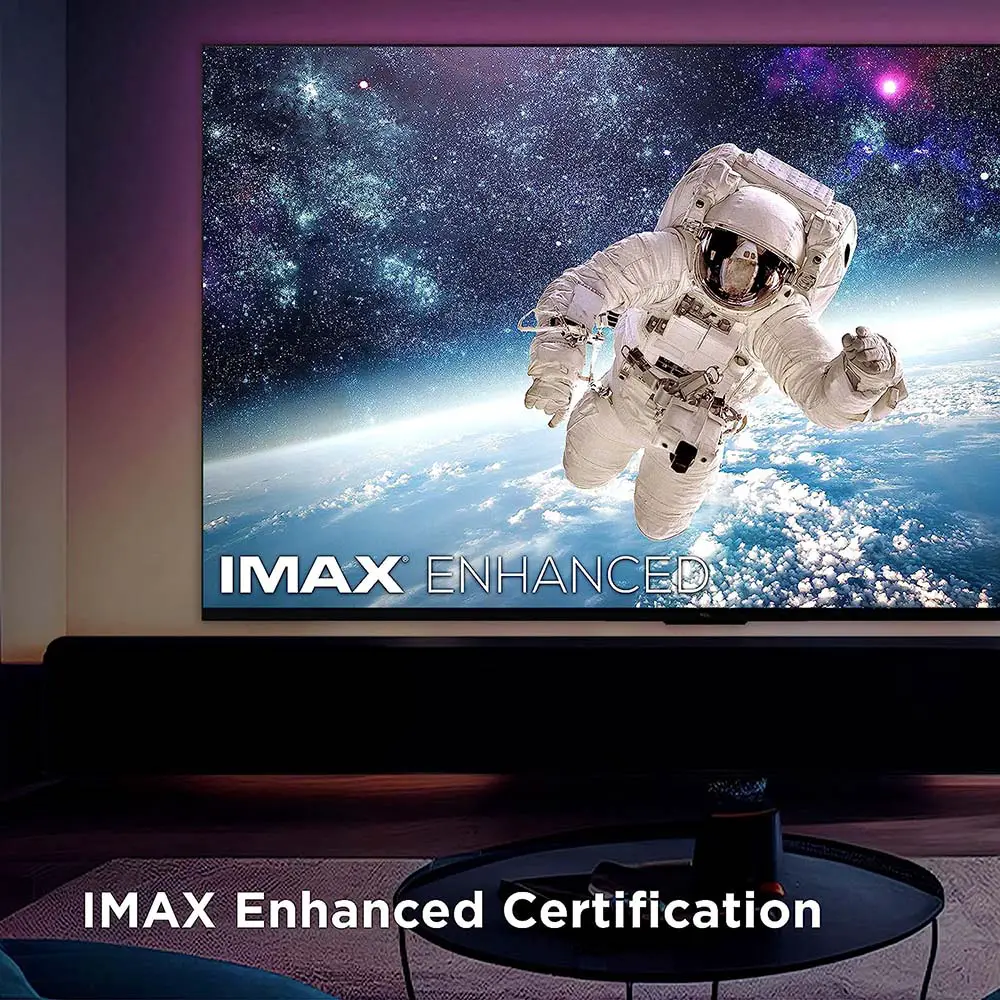
IMAX Enahnced
Lastly we should not forget to mention that the TCL QM8 is IMAX Enhanced. This is a certification that we don’t see often in a TV. Until now mostly Sony top offerings were coming with IMAX Enhanced certification. And while this may not be a huge feature it is good to have it for added value.
Compared to other TVs
The only TV from 2023 that we have tested and comes close to the price of the QM8 is the Samsung Q80C. But to be honest performance wise there is not much to compare as the TCL is hands down the better TV. There are some areas where both TVs are equal but the QM8 trashes the Q80C is some important ones like peak brightness and color accuracy.
An interesting comparison is between the QM8 and the 2022 Hisense U8H. The Hisense is much cheaper but performance wise each one wins in specifics categories. The TCL for example has better brightness while the Hisense has better colors. But given the much lower price of the U8H we would give the edge on this one compared to the QM8.
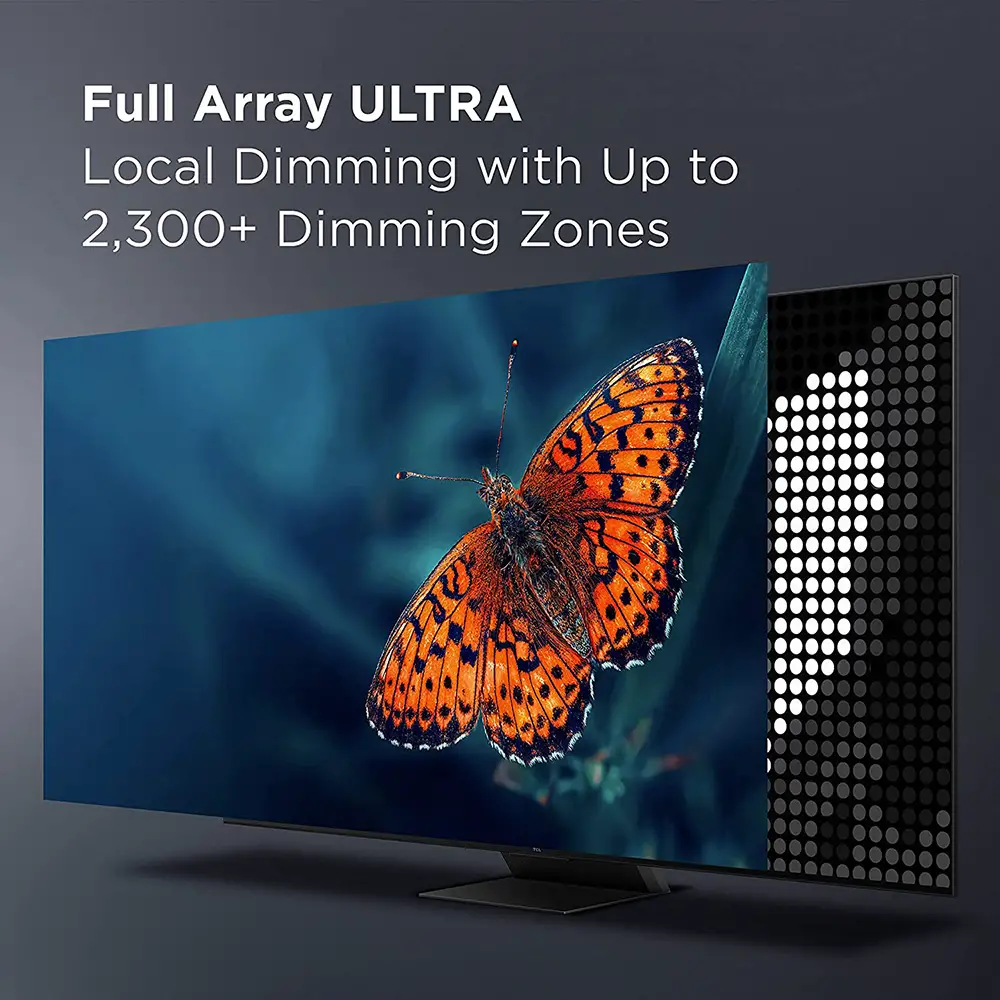
Final Thoughts
TCL may not have the brand recognition of Sony, Samsung and LG. But like Hisense they do have a very aggressive pricing policy to promote their products. And this results in TVs with great specs at very low prices which is hard to find in any of the other more known brands.
As for the QM8 specifically, the TV left us with very good impressions. Its peak brightness was amazing, its colors were great and its backlight/local dimming did an excellent job with very minor blooming. The TV also had very solid motion and gaming performance. It supports both 4k@144Hz and 1080p@240Hz while we liked the fact that the eARC was in one of the HDMI 2.0 ports.
On the downsides its viewing angles were mediocre due to the VA panel used. Also brightness levels were not very accurate no matter the picture mode. Its out-of-the-box performance was average so you will need to spend some time calibrating it to get the most out of it. Lastly its audio performance was, as usual, only good for casual use.
We reached the end of our review and what we can say is that if you really want top tier performance but you are not bound to any of the three big brands, then the TCL QM8 is an excellent choice. It combines performance with amazing price which is hard to find nowadays with all prices gone up considerably. Highly recommended.

For more reviews you can check our dedicated 4K LED LCD TV reviews section or even look at our Product Reviews Table where you can find the brand and specific product you are looking for.
Cheapest Places to Buy :
*We are a reader-supported website. When you buy through links on our site, we may earn a small affiliate commission at no extra cost to you. Home Media Entertainment does not accept money for reviews.*
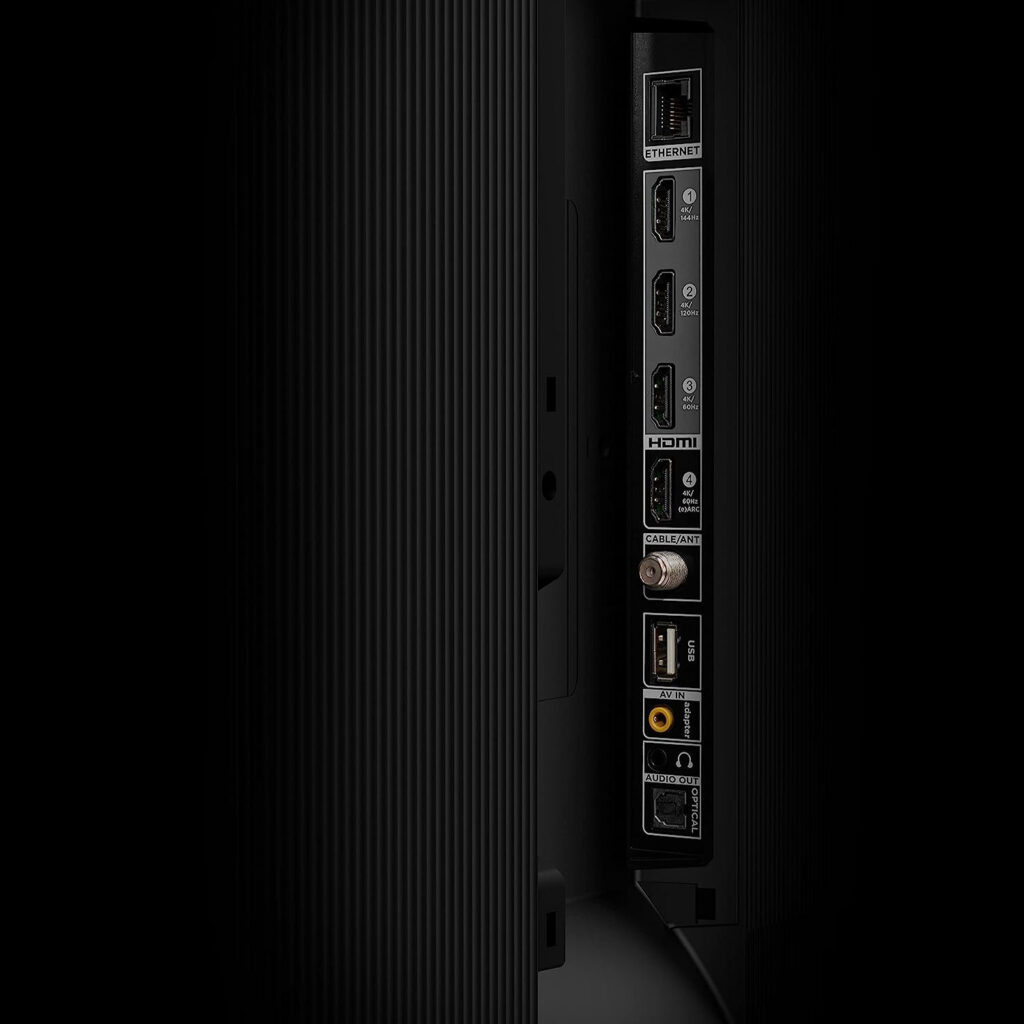
I recently had the opportunity to test the TCL QM8, and I must say, it’s been a truly captivating experience. This in-depth review provided on this blog post mirrored my own discoveries as I explored the features and capabilities of this TV. For anyone looking for a top tier performing TV at a low price then this is the one.
Hey Dave. Thank you for confirming our own observations. The QM8 is really a great TV and surely challenges many of the top tier models from the big three manufacturers.
I just finished reading your comprehensive review of the TCL QM8/QM850G, and I must say that I’m impressed by the depth of your analysis. You’ve managed to provide an incredibly detailed insight into a television that seems to stand out in the market, especially considering the competition it faces from giants like Samsung, LG, and Sony.
Thank you for your diligent work in putting together this informative review. It’s contributions like yours that help bridge the gap between consumers and technology, allowing us to make educated choices in a rapidly evolving market!
Hello Anoth and thank you for your comment. If you need any help let me know in the comments area. Have a nice day!
To be honest I never had previous experience with TCL so I do not know what to expect exactly. I was always a Sony guy but their prices are becoming ridiculous. The QM8 looks really great for its price so I am wondering if it is worth it. Would you recommend it over a Sony?
Hey Pablo. Indeed the QM8 is the epitome of a value for money TV. You are not going to find such performance in a TV from any of the three big brands. That’s why brands like Hisense and TCL have gained some market share recently. Because they offer a lot with a very aggressive pricing policy. My suggestion is that if you are tight in budget but really want top tier performance then the QM8 will be an excellent choice. You have nothing to be afraid performance wise. Obviously I cannot speak about customer service as this is vastly different in various regions.